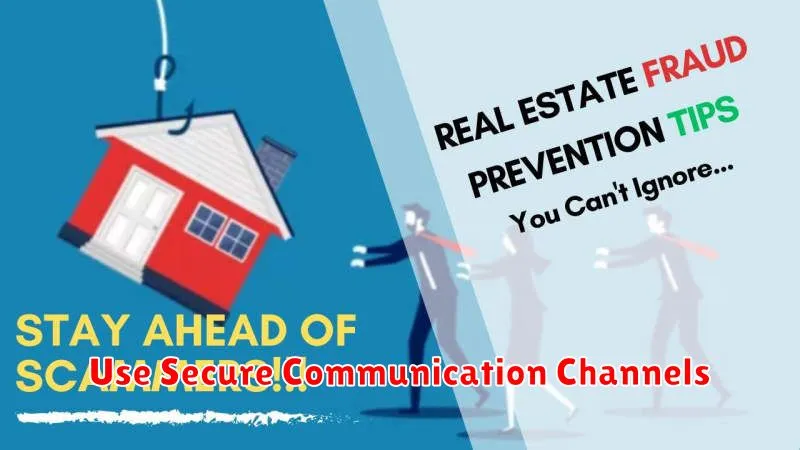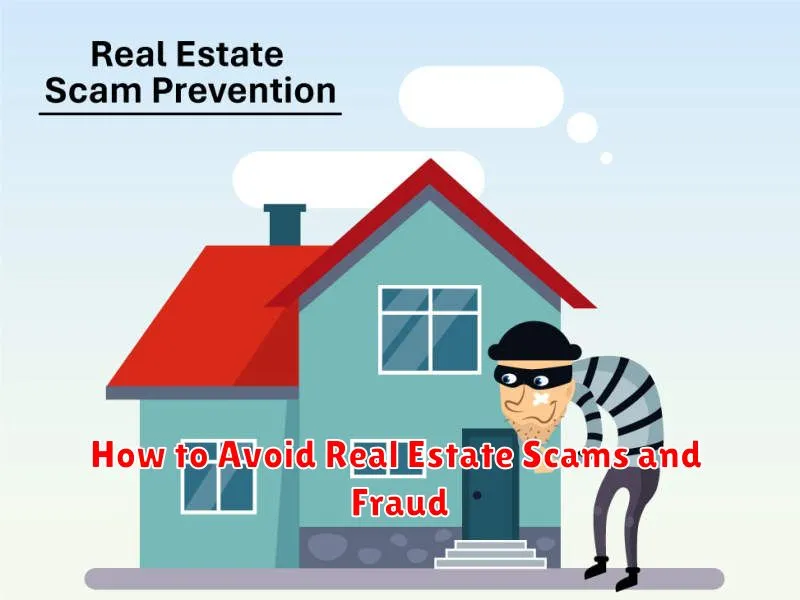Navigating the real estate market can be a complex process, especially with the rise of real estate scams and fraudulent activities. Protecting yourself from these real estate scams requires vigilance, knowledge, and a proactive approach. This article will provide you with essential insights and practical tips to identify and avoid common real estate fraud schemes, ensuring a safe and secure property transaction. Understanding how to spot red flags in real estate transactions can save you significant financial loss and emotional distress.
From rental scams and foreclosure fraud to title fraud and wire fraud, various deceptive practices target unsuspecting buyers, sellers, and renters. This comprehensive guide will delve into the different types of real estate scams, offering clear examples and actionable strategies to protect your interests. Learn how to thoroughly research properties, agents, and companies, as well as the importance of verifying information and utilizing secure payment methods. Don’t fall victim to property scams; empower yourself with the knowledge to navigate the market confidently and securely.
Common Types of Real Estate Scams
Foreclosure scams often target distressed homeowners facing foreclosure. Scammers may pose as foreclosure rescue specialists, promising to save the homeowner’s property. These schemes frequently involve convincing the homeowner to sign over the deed to their property, often with a promise of being able to rent or buy it back later. Instead, the scammer takes ownership and leaves the homeowner homeless and with damaged credit. Other variations involve charging exorbitant fees for services that are never delivered, or offering loan modifications with predatory terms. Due diligence and seeking advice from legitimate housing counselors or legal professionals are crucial to avoid these traps.
Rental listing scams are prevalent online. Scammers copy legitimate rental listings, often with photos and descriptions, and advertise them at lower-than-market prices. They may claim to be out of town and unable to show the property, requesting an upfront payment of a security deposit or first month’s rent. Once the money is sent, the scammer disappears. Another common tactic involves fake rental applications designed to steal personal and financial information. Verifying the identity of the landlord and the legitimacy of the listing, including visiting the property in person, are important steps to avoid falling victim to these schemes.
Timeshare resale scams prey on individuals looking to sell their timeshare properties. These scammers often contact owners unsolicited, claiming to have ready buyers or offering guaranteed sales. They may require upfront fees for advertising, closing costs, or other services, which they pocket without delivering on their promises. Timeshare owners should be wary of unsolicited offers and conduct thorough research before engaging with any resale company.
Warning Signs to Watch Out For
Being aware of potential dangers is crucial for personal safety and well-being. Recognizing warning signs can help you avoid hazardous situations and take appropriate precautions. These signs can manifest in various forms, from physical indicators like unusual smells or sounds to behavioral cues like aggressive language or suspicious activity. Staying alert and observant is key to identifying potential threats and taking timely action.
In the workplace, warning signs might include faulty equipment, inadequate safety measures, or a hostile work environment. At home, potential hazards could range from gas leaks and electrical malfunctions to signs of intrusion or domestic violence. When driving, be vigilant of other drivers’ behavior, road conditions, and traffic signals. Ignoring warning signs can lead to serious consequences, so it’s essential to pay attention and address potential dangers promptly.
If you encounter a warning sign, assess the situation calmly and determine the appropriate course of action. This may involve contacting the relevant authorities, evacuating the area, or taking other safety measures. Remember, your safety is paramount, and taking proactive steps to address warning signs can prevent harm and protect your well-being.
How to Verify Listings and Agents

Verifying real estate listings and agents is crucial for a secure transaction. For listings, confirm the property’s existence through public records or reputable online platforms. Pay attention to details like the address, square footage, and listed price, cross-referencing information across multiple sources. Look for inconsistencies that could indicate a fraudulent listing. For agents, verify their licensing status through your state’s real estate regulatory body. This confirms their legitimacy and provides access to any disciplinary actions taken against them.
When engaging with an agent, be wary of high-pressure sales tactics or requests for upfront fees before services are rendered. Trustworthy agents will prioritize your needs and operate with transparency. Requesting references from previous clients can provide valuable insights into their professionalism and performance. A thorough background check can significantly reduce the risk of falling victim to real estate scams.
Additionally, consider using established escrow services for financial transactions. Escrow accounts protect both buyers and sellers by holding funds securely until all conditions of the sale are met. This adds another layer of security and mitigates the risk of financial loss. By taking these proactive steps, you can ensure a smoother and more secure real estate experience.
Never Transfer Money Without Proof

Transferring money involves risk, especially when dealing with unfamiliar individuals or businesses. Always obtain proof of the transaction before, during, and after sending funds. This proof can include receipts, confirmation numbers, transaction IDs, or even screenshots of online transfers. This documentation is crucial for resolving disputes, tracking payments, and protecting yourself from potential fraud or misunderstandings.
Different payment methods offer various forms of proof. Wire transfers typically provide a receipt with a unique tracking number. Online payment platforms often generate transaction IDs and allow you to download payment histories. For in-person transactions, insist on a signed receipt. Regardless of the method, never assume a verbal agreement or promise is sufficient. Concrete proof is essential.
Should any issues arise, such as a payment not being received or a discrepancy in the amount, the documentation you collected will be invaluable. It serves as evidence for contacting your financial institution or the recipient to rectify the situation. Having proper proof can save you time, money, and significant frustration in the long run.
Use Secure Communication Channels

Protecting sensitive information during transmission is paramount. Always use secure communication channels such as HTTPS for websites and end-to-end encrypted messaging apps for personal communications. This encryption scrambles your data, making it unreadable to anyone intercepting it. Avoid transmitting sensitive data, like passwords or financial information, over unsecured channels like public Wi-Fi or standard email.
Look for visual indicators of secure connections. For websites, ensure the address bar begins with “https://” and displays a padlock icon. For messaging apps, verify the app offers end-to-end encryption, meaning only you and the recipient can decipher the messages. Consider using a virtual private network (VPN) for an added layer of security, especially when using public Wi-Fi. A VPN creates a secure, encrypted tunnel for your internet traffic, shielding your data from potential eavesdroppers.
If you must use a less secure channel, consider additional safeguards. For example, use a strong, unique password for each account and enable two-factor authentication (2FA) whenever possible. 2FA adds an extra layer of security by requiring a second form of verification, like a code sent to your phone, in addition to your password. Be wary of suspicious links or emails requesting personal information, and always verify the sender’s identity before sharing sensitive data.
Report Suspicious Activity Immediately
Protecting our community is everyone’s responsibility. If you see something suspicious, say something. Suspicious activity can include unusual behavior, unfamiliar persons lurking near restricted areas, or abandoned packages. It also encompasses activities like unauthorized attempts to access secure systems or unusual financial transactions. Reporting these incidents promptly helps prevent potential harm and maintain a secure environment.
When reporting suspicious activity, provide as much detail as possible. This includes the specific location, date and time of the incident, and a detailed description of what you observed. If individuals are involved, note any identifying characteristics such as clothing, height, and build. The more information you can provide, the more effectively authorities can respond. Remember, it’s always better to err on the side of caution.
Contact the appropriate authorities immediately to report suspicious activity. This might be your local police department, security personnel, or a designated reporting hotline. Do not attempt to confront or apprehend suspicious individuals yourself. Your safety is paramount.
Stay Informed with Online Tools
Staying informed in today’s fast-paced world can feel overwhelming. Thankfully, numerous online tools are available to help you keep up with current events and important information. News aggregators compile news from various sources, allowing you to customize your feed based on your interests. Social media platforms, while requiring careful source evaluation, can offer real-time updates and diverse perspectives. Utilizing these tools effectively can significantly improve your ability to stay informed.
Beyond news consumption, online tools can help you stay informed in other crucial areas. Subscription services offer in-depth analysis and reporting on specific topics, often providing expert opinions and exclusive content. Email newsletters curated by reputable organizations can deliver relevant information directly to your inbox. By diversifying your information sources and utilizing these tools, you can develop a more comprehensive understanding of the world around you.
Remember to be critical of the information you encounter online. Evaluate the source’s credibility and consider potential biases. Cross-referencing information with multiple sources can help you verify its accuracy and form informed opinions. By staying vigilant and using online tools responsibly, you can effectively navigate the complex information landscape and stay well-informed.

